Publié sur :
Publication PowerPoint Nicole Delépine - 2009
Voir la version PDF de cette publication :

In vivo release of high dose vancomycin from loaded cement in patients with periprostheses infection effective bactericidal activity
J. Alvarez, E. Abe, B. Markowska, Gérard Delepine,
Nicole Delepine
In vivo release of high dose vancomycin from loaded cement in patients with periprostheses infection effective bactericidal activity.
After limb salvage, infection
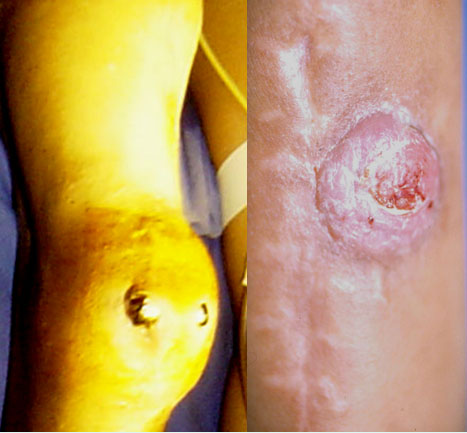
Is a devastating complication that occurred in 8 to 20% of patients treated by en bloc resection and prosthetic reconstruction for bone sarcomas.
Resulting often in secondary amputation.
Antibiotic loaded cement spacers
Have been widely used since 1972 to prevent and to treat prosthetic infection.
The delivery of a high concentration of antibiotics in a localized area is thought to be safer than systemic administration of intravenous antibiotics in such doses.
the emergence of increased resistance of staphylococcus
Explains recent less effectiveness of conventionnal antibiotic loaded cement (low dose of antibiotics)
Plaes for higher doses of antibiotics
And compells us to consider the antibiotic concentration in the operating field
systemic safety of high dose vancomycin
The systemic safety of high dose vancomycin loaded spacer has been investigated* but rarely the elution of high vancomycin from cement in vivo.
*Systemic Safety of High-Dose Antibiotic-Loaded Cement Spacers after Resection of an Infected Total Knee
Arthroplasty Bryan D. Springer, MD and coll Clin. Orthop.Rel.Desease 2004
The aims of the study
1-To confirm the systemic safety of using high doses of vancomycin in cement
2-To evaluate the elution of vancomycin into the site of the excision arthroplasty to see if effective bactericidal activity can be obtained
Patients and methods
From 2006 to 2008 , 16 consecutive patients were managed by prosthetic exchange 2 stages procedure using high dose vancomycin loaded cement spacer.
Patients were males :7 females : 9. Average of age at the time of surgery was 22 years.
Antibiotic-loaded methylmethacrylate cement
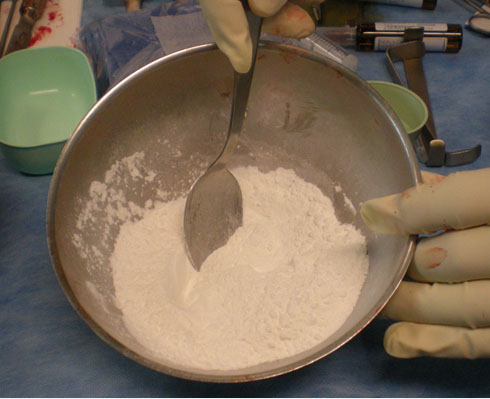
Cement were prepared by adding 4 g of vancomycin powder to a 40 g pack of Palacos R cement in the operative room during the operation.
We generally used 2 to 4 batches of cement in one spacer depending of the size and length of resection
The average dose of implanted vancomycin was 7.5 G (4-14.5).
spacer for proximal tibia
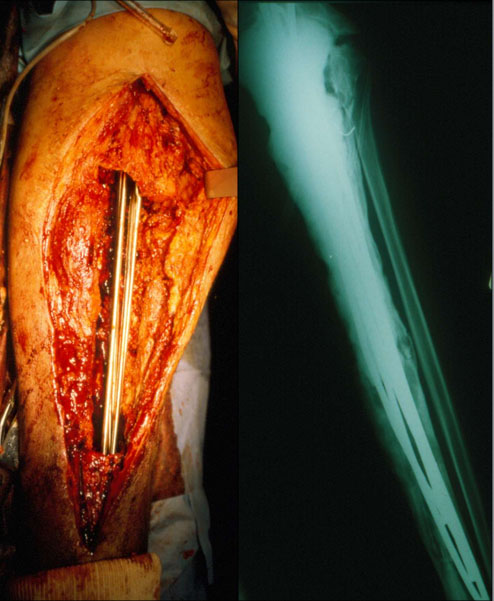
The spacer was composed of metallic rods covered with antibiotic loaded cement.
Gentamycine+
Vancomycine (4 gr/pack).
spacer for femur
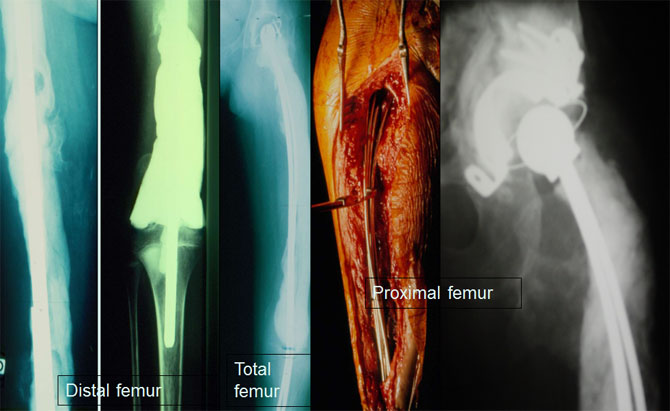
other spacers
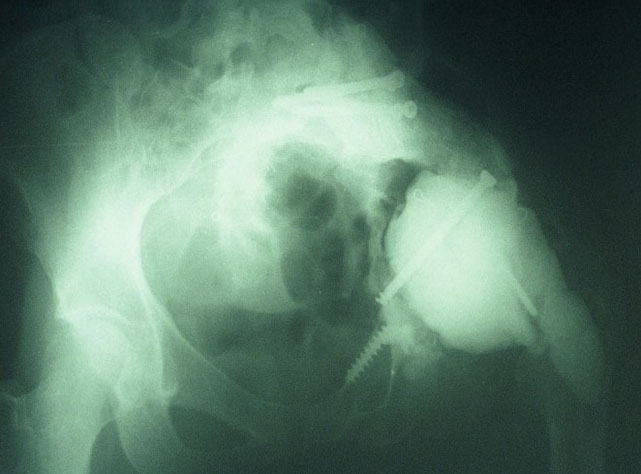
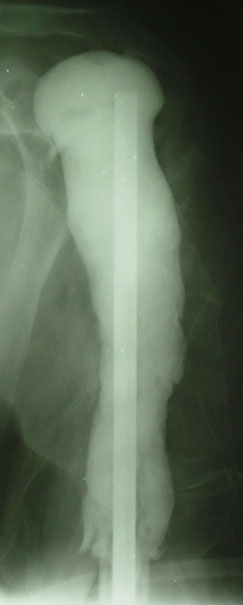
Spacers used for proximal humerus or acetabular prosthesis.
Post operative cares
The wounds were closed with absorbable mono-filaments sutures over one suction drain.
Intravenous antibiotics excluding vancomycin were given for 6 to 24 weeks.
Patients biological values and the concentrations of vancomycin in the blood and in the aliquots of suction drainage were checked daily until removal of drain (d10-d15).
Results for systemic safety
The serum concentration of vancomycin remained under 2 µg/ml in all patients
We observed no case of
-allergy,
-toxicity
-or intolerance
Local concentration
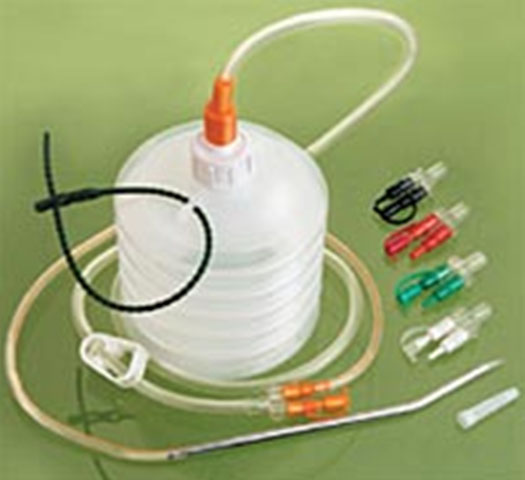
Local concentration of vancomycin depended of the dose of vancomycin used and decreased quickly during the first week.
half life :2.25 days.
Local concentration for 10 Grams
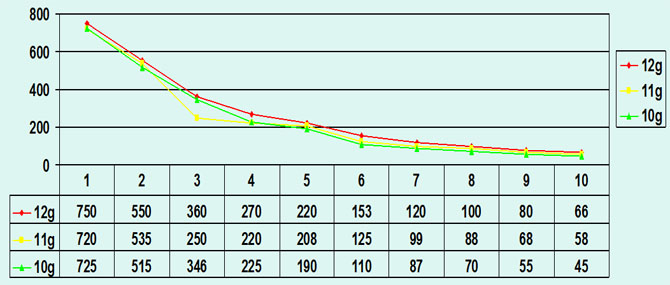
For a dose of 10 G vancomycin , the average concentration from the drain was :d1 :725µg/ml, d2 :510 µg/ ml,d3 :346
Is it bactericidal?
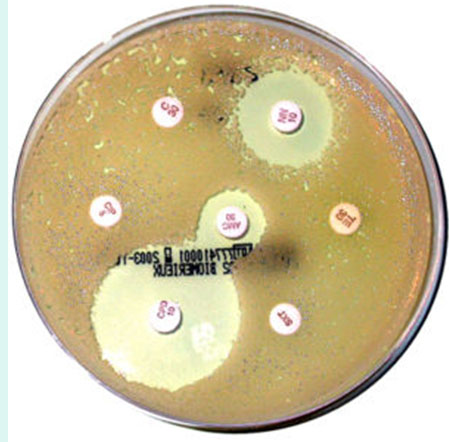
These results should be compared to the bactericidal concentration of vancomycin for staphylococcus aureus :
-10 to 20 µg/ml for usual organisms,
-20 to 40 µg/ml for resistant organisms.
Conclusion
High dose vancomycin spacers result in very low serum concentration without risk of systemic toxicity.
In the operative wound , very high concentration are obtained , 10 to 20 fold bactericidal concentration for staphylococcus aureus.
Additional studies are needed , with longer follow-up to evaluate the clinical efficacy of this method.


